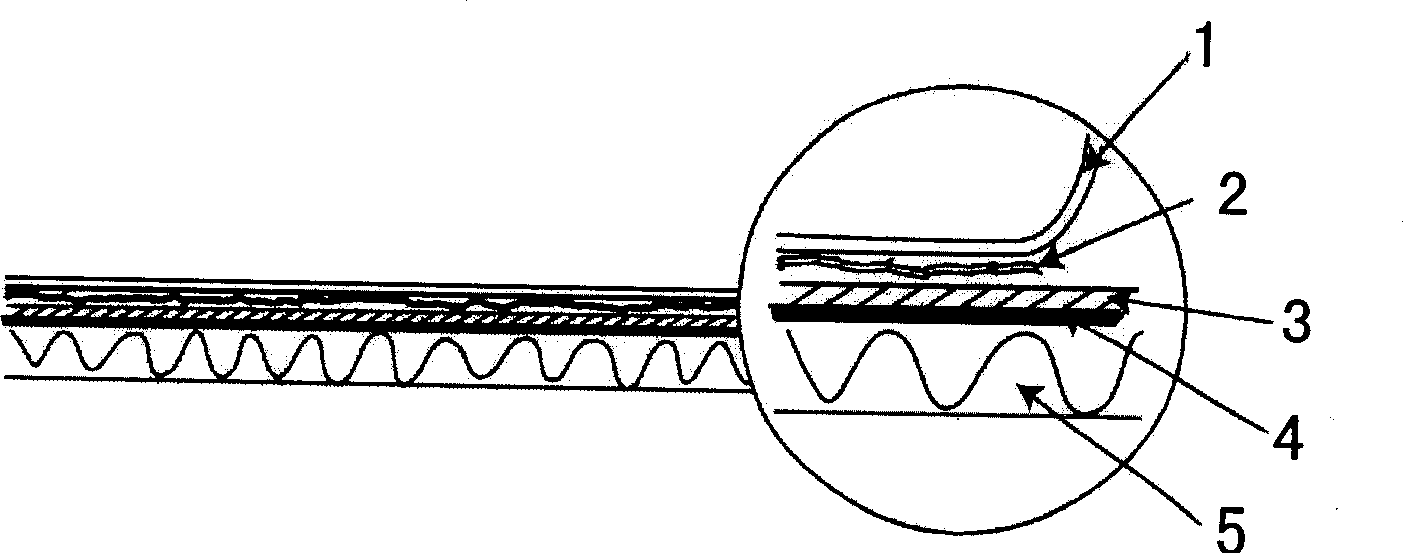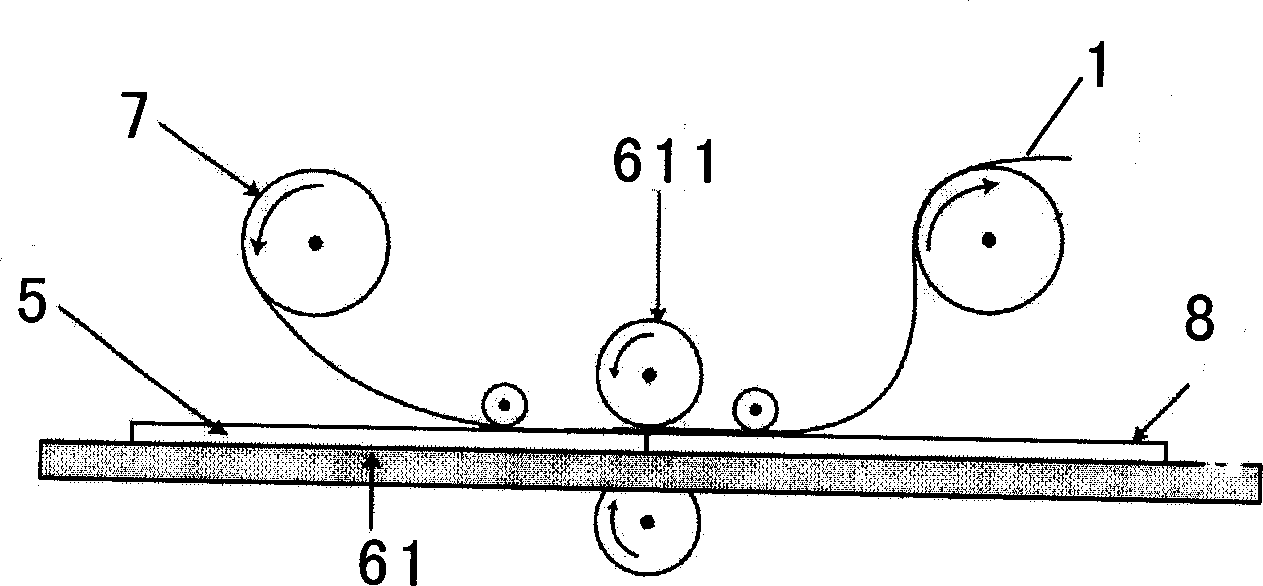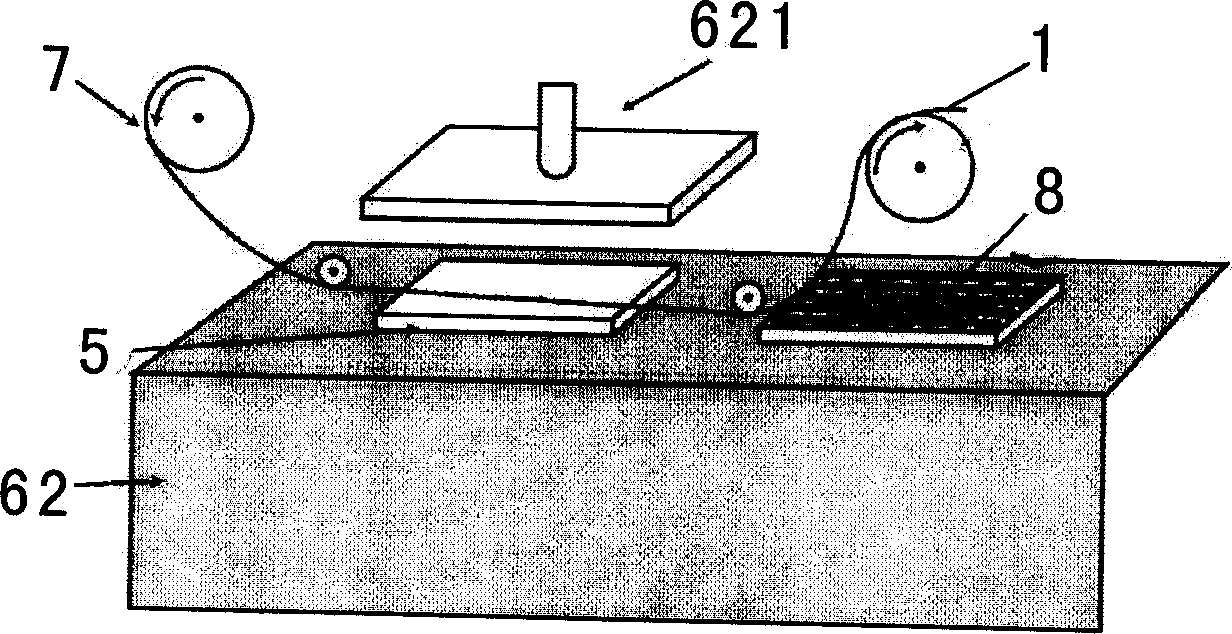Transfer printing method
A technology of transfer film and transfer machine, which is applied in the direction of transferring ink from manuscripts, etc., can solve the problems of whether the space size of the processed object is not fully cooled, the processing quality is difficult to guarantee, and the viscosity is destroyed, and the product pattern is beautiful. Clear, shorten the constant temperature drying, solve the effect of deformation error
- Summary
- Abstract
- Description
- Claims
- Application Information
AI Technical Summary
Problems solved by technology
Method used
Image
Examples
Embodiment 1
[0027] Roller type room temperature transfer printing: such as figure 2 Apply a layer of all-purpose glue on the surface of product 5 at a temperature of 10-40°C by means of roller gluing, and semi-dry for later use until the all-purpose glue volatilizes to 40% - 60%, whichever is not sticky to the touch. Glue can also be applied by spraying glue, manually brushing glue, etc. Put the ordinary transfer film on the surface of the processed product, send it into the roller transfer machine 61, and roll it with the pressure roller 611, so that the transfer film 7 and the product are pressed at the same time, and the pressure reaches 50----100 kg , Under the action of pressure, it is firmly combined. The pressure standard depends on the material and thickness of the product to adjust the wheelbase and pressure of the pressure wheel. Because there is a release agent on the transfer film, the plastic film 1 can be easily removed at the same time or a few seconds after the product t...
Embodiment 2
[0029] Flatbed normal temperature pressure transfer printing: such as image 3 At a temperature of 10-40°C, use a gluing machine to coat a layer of universal glue on the surface of the processed object 5. The same as the first embodiment, the processed object is sent to the flat-bed pressure transfer machine 62, and the flat plate 621 is used to apply a certain amount of product to the product. Pressure, the pressure reaches about 50-100 kg, and the pressure is adjusted according to the size and material of the product. After the product is pressed for a few seconds, it can be completely attached to the processed object, and the transfer film 1 can be torn off to obtain the finished product 8 .
Embodiment 3
[0031] Push extrusion transfer printing: such as Figure 4 As shown, at a temperature of 10-40°C, a layer of universal glue is coated on the surface of the workpiece 5 to be semi-dry for later use, and the coated universal glue volatilizes to 40% - 60%, whichever is not sticky to the touch; Then put the semi-dried processed product on the workbench 63 and cover the transfer film 7; on the surface of the product covered with the transfer film, use hand 631 to push it hard evenly, and the pressure reaches 5--10 kg; when the product Tear off the transfer film 1 after fully and evenly pressing.
PUM
 Login to View More
Login to View More Abstract
Description
Claims
Application Information
 Login to View More
Login to View More - R&D
- Intellectual Property
- Life Sciences
- Materials
- Tech Scout
- Unparalleled Data Quality
- Higher Quality Content
- 60% Fewer Hallucinations
Browse by: Latest US Patents, China's latest patents, Technical Efficacy Thesaurus, Application Domain, Technology Topic, Popular Technical Reports.
© 2025 PatSnap. All rights reserved.Legal|Privacy policy|Modern Slavery Act Transparency Statement|Sitemap|About US| Contact US: help@patsnap.com



